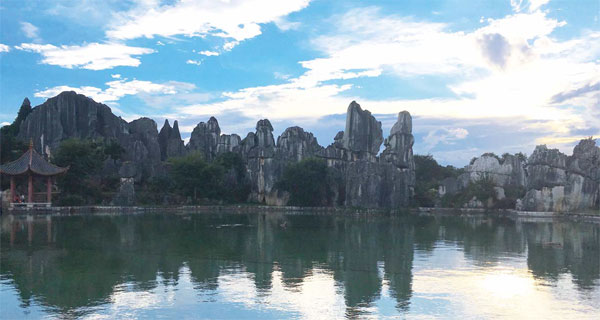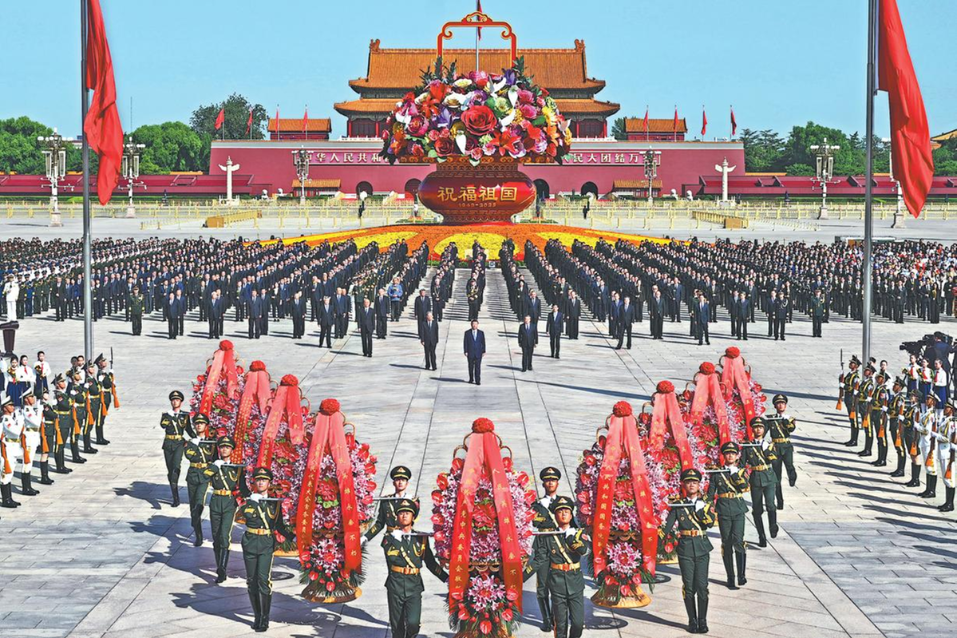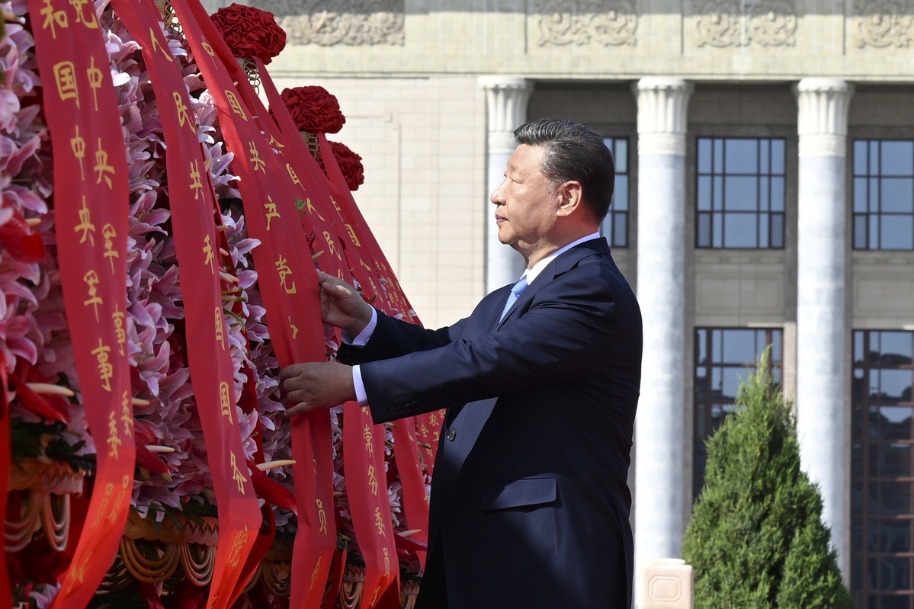Kunming's eternal spring

Three days of exploring Yunnan's capital reveal a land where geology, ecology and ethnology congeal to evoke a magical charm
Stone spires. Karst caves. Wild wetlands.
Eclectic ethnic culture, languid lakes and fiery fare.
To this, add a city of perpetual spring, where verdant landscapes flash every shade of green and flowers crackle color like fireworks in every season.
| The Stone Forest in Kunming is a thicket of limestone formations that create a topographical wonderland. Photos by Erik Nilsson / China Daily |
Kunming exists on an unparalleled plane, where geology, ecology and ethnology intersect in incredible ways.
It has long been a bastion for bohemians, from ancient literati to dreadlocked hippies, and for good reason.
The place is poetry.
Foreign visitors from dozens of countries can enjoy 72 hours of visa-free transit in the city.
China Daily spent three days divining the magic that Yunnan's capital conjures.
DAY 1: Stone Forest
Countless stone daggers slice the Stone Forest's skyline, lacerating the horizon to sculpt one of our planet's most unearthly places.
The karst formations have, in turn, forged the culture that dwells amid them.
They serve as the fantastical fairyland setting for a fairytale of the Yi ethnic group's Sanyi branch, in which a local shepherd rescues his true love from an evil landlord, who tragically then turns the couple to stone.
The topographical miracle is worth setting aside a whole day to explore. And that's not just because guides say much of their job is helping lost people navigate their way out of the rocky labyrinths.
DAY 2: Dian Ancient Town
Traditional wooden boats glide across Dianchi Lake from Ancient Kunming Wetland Park - a snarl of land bridges that trace the outlines of dozens of pools bristling with reeds, lily pads and blossoms.
Two dozen swamps pull water away from Dianchi's shoreline. Pathways and boardwalks offer strolls and cycling.
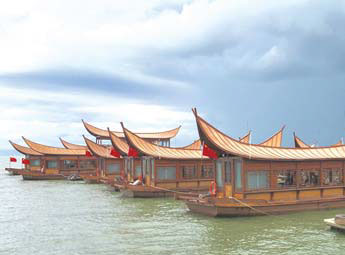
The wetlands run the gamut from bogs to beaches. That includes the sandy lakeshore that locals half-jokingly call Kunming's Maldives.
Visitors can fish and barbecue their catches.
Yunnan Nationalities Village
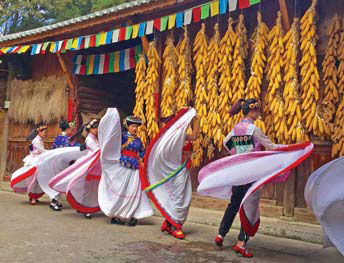
Traditional houses, customs and ethnically unique items, ranging from the sacred to the everyday, portray the social lives of the country's 56 ethnic groups in the capital of its most diverse province.
Performances often become interactive when visitors are invited to try the "bamboo dance" - which is like a moving obstacle course. You must skip through rows of poles that are clacked together in sync with the music's rhythm. Or guests may join Tibetan circle dances, which are less ankle-stinging yet still require fancy footwork.
Douhan Flower Market
Lilies. Lotuses. Chrysanthemums.
Asia's largest flower market offers sensory overload - in a good way. Douban is indeed an eyeful and a nose-full, made vibrant and fragrant by the 10 million blooms it deals in daily.
Kunming is indeed an Eden in the botanical sense.
Douhan claims to command 70 percent of the nation's floral market. Visitors can buy not only fresh or dried bouquets and potted plants ranging from succulents to bonsai, but also natural essential oils, edible goods and soaps.
The market operates 24 hours and is busiest after 10 pm.
It's worth visiting just to take a moment to stop and smell the ... you know.
DAY 3: Green Lake
Green Lake is a placid place where folks stroll along boardwalks or dance accompanied by traditional instruments.
They perform against backdrops of boats skimming over waves.
Bridges create a grid of pathways over the lake.
Military academy
The Yunnan Military Academy was founded in 1909 to train the Qing Dynasty's (1644-1911) New Army to quell social unrest - its soldiers, instead, joined the growing rebellion that overthrew imperial rule two years later.
It trained such Communist leaders as Zhu De and Ye Jianying.
Today, it displays photos and such weapons as swords, cannon and tridents used by local ethnic minorities that were incorporated into the martial-arts curriculum.
Dianchi Wetlands
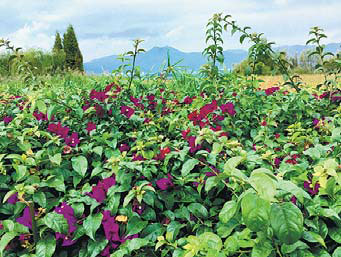
Visitors can stroll along walking paths with boats bobbing in rivers on one side and birds floating in the wetlands on the other.
The marsh hosts more than 280 animal species and 23 fish varieties. It crackles with the colors of a rainbow-burst of flowers.
Yunnan University
This Ming Dynasty (1368-1644) testing center became the province's first university in 1922. Today, its serene campus is as much a public park as a place of learning.
Newlyweds snap photos and families picnic beneath canopies of gingkoes, whose golden leaves shimmer to applaud autumn breezes. Movies filmed here often include students as actors.
A 500-year-old statue of a mythical beast - a blend of a lion, two types of dragons and a unicorn - guards the exam rooms. It's meant to enforce honesty among aspiring students as well as teachers with a penchant for nepotism.
The ancient Chinese statue stands in contrast to the European and Russian architecture, including the "haunted" clock tower. Students say a woman who hanged herself in the structure can be heard wailing at night.
In the daytime, it stands as a monument to slowly passing time in Kunming - that is, no matter how short your stay.
erik_nilsson@chinadaily.com.cn
(China Daily European Weekly 11/18/2016 page22)
Today's Top News
- September manufacturing PMI rises
- Fifty expats awarded for contributions
- Continuing the cause of national rejuvenation
- Xi: Forge ahead in advancing modernization
- Beijing reaffirms one-China principle
- China releases position paper on UN General Assembly Resolution 2758
















